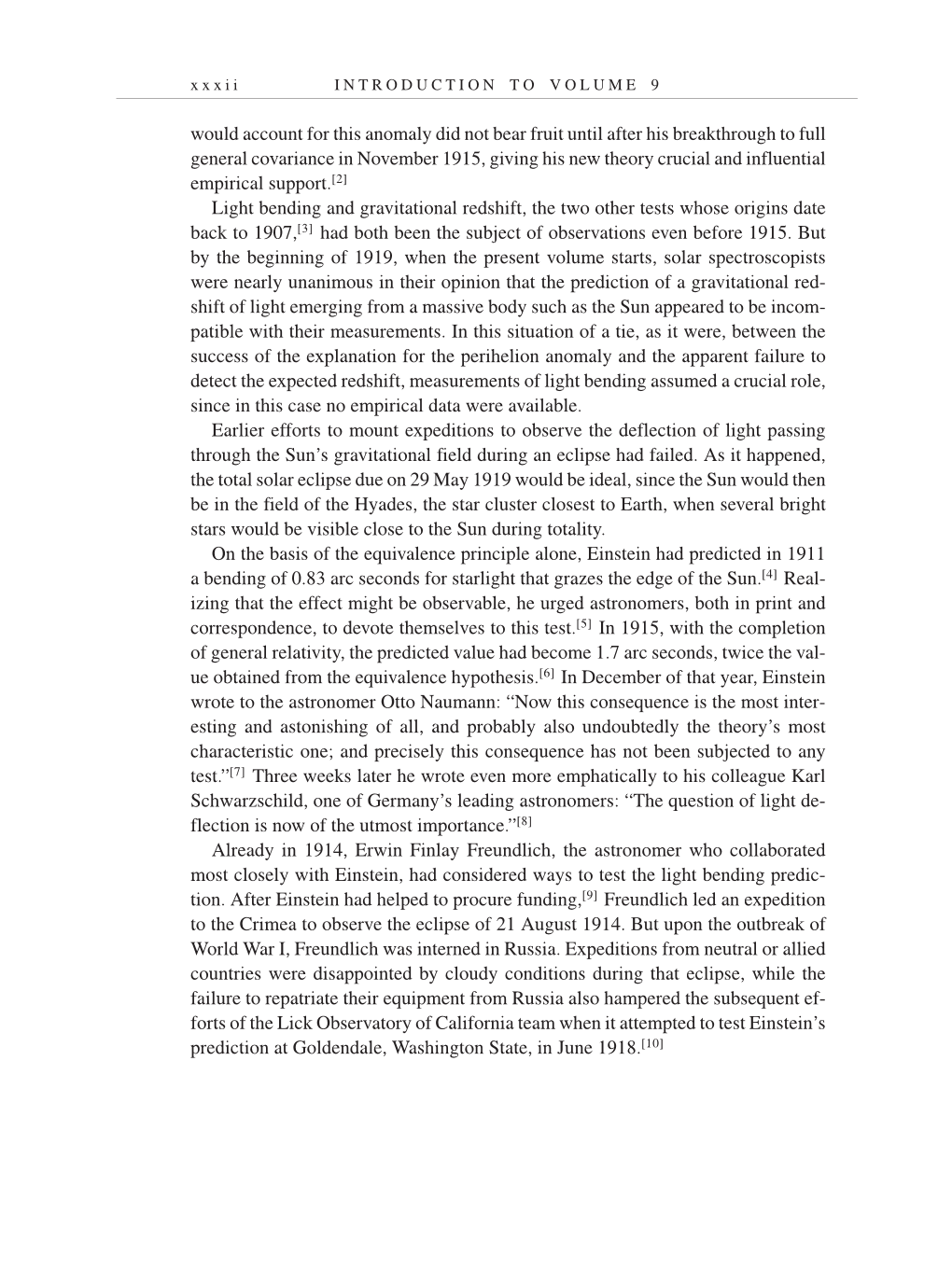x x x i i I N T R O D U C T I O N T O V O L U M E 9
would account for this anomaly did not bear fruit until after his breakthrough to full
general covariance in November 1915, giving his new theory crucial and influential
empirical
support.[2]
Light bending and gravitational redshift, the two other tests whose origins date
back to
1907,[3]
had both been the subject of observations even before 1915. But
by the beginning of 1919, when the present volume starts, solar spectroscopists
were nearly unanimous in their opinion that the prediction of a gravitational red-
shift of light emerging from a massive body such as the Sun appeared to be incom-
patible with their measurements. In this situation of a tie, as it were, between the
success of the explanation for the perihelion anomaly and the apparent failure to
detect the expected redshift, measurements of light bending assumed a crucial role,
since in this case no empirical data were available.
Earlier efforts to mount expeditions to observe the deflection of light passing
through the Sun’s gravitational field during an eclipse had failed. As it happened,
the total solar eclipse due on 29 May 1919 would be ideal, since the Sun would then
be in the field of the Hyades, the star cluster closest to Earth, when several bright
stars would be visible close to the Sun during totality.
On the basis of the equivalence principle alone, Einstein had predicted in 1911
a bending of 0.83 arc seconds for starlight that grazes the edge of the
Sun.[4]
Real-
izing that the effect might be observable, he urged astronomers, both in print and
correspondence, to devote themselves to this
test.[5]
In 1915, with the completion
of general relativity, the predicted value had become 1.7 arc seconds, twice the val-
ue obtained from the equivalence
hypothesis.[6]
In December of that year, Einstein
wrote to the astronomer Otto Naumann: “Now this consequence is the most inter-
esting and astonishing of all, and probably also undoubtedly the theory’s most
characteristic one; and precisely this consequence has not been subjected to any
test.”[7]
Three weeks later he wrote even more emphatically to his colleague Karl
Schwarzschild, one of Germany’s leading astronomers: “The question of light de-
flection is now of the utmost
importance.”[8]
Already in 1914, Erwin Finlay Freundlich, the astronomer who collaborated
most closely with Einstein, had considered ways to test the light bending predic-
tion. After Einstein had helped to procure
funding,[9]
Freundlich led an expedition
to the Crimea to observe the eclipse of 21 August 1914. But upon the outbreak of
World War I, Freundlich was interned in Russia. Expeditions from neutral or allied
countries were disappointed by cloudy conditions during that eclipse, while the
failure to repatriate their equipment from Russia also hampered the subsequent ef-
forts of the Lick Observatory of California team when it attempted to test Einstein’s
prediction at Goldendale, Washington State, in June
1918.[10]
